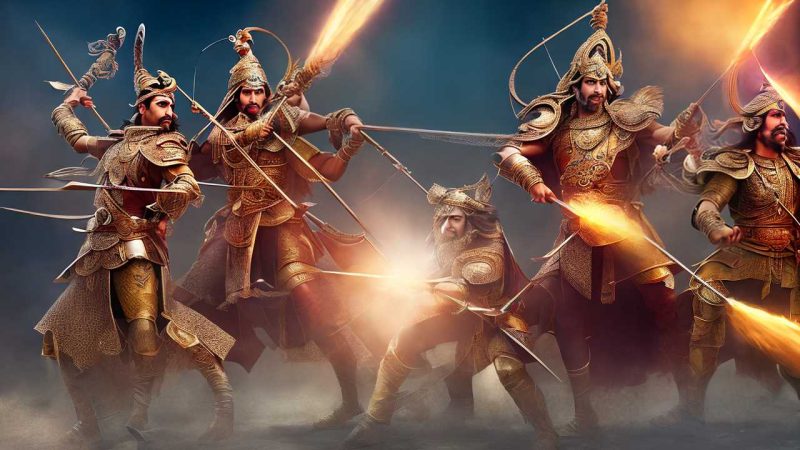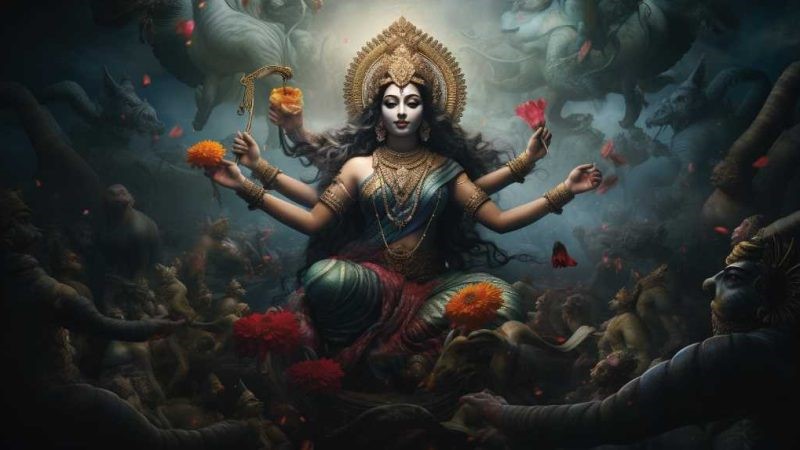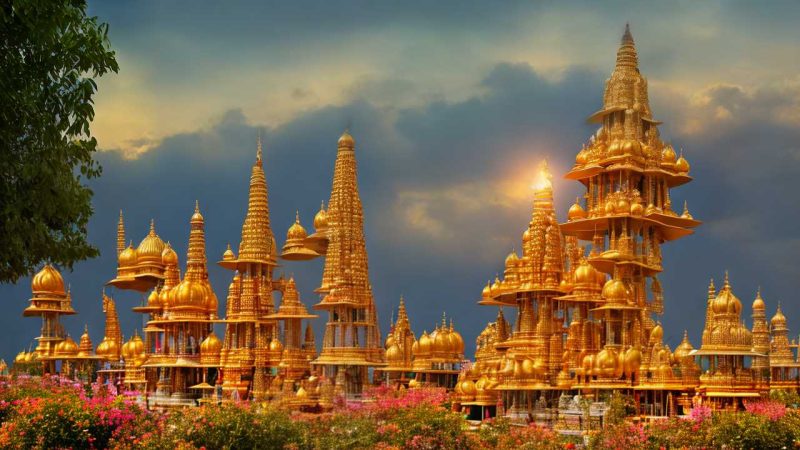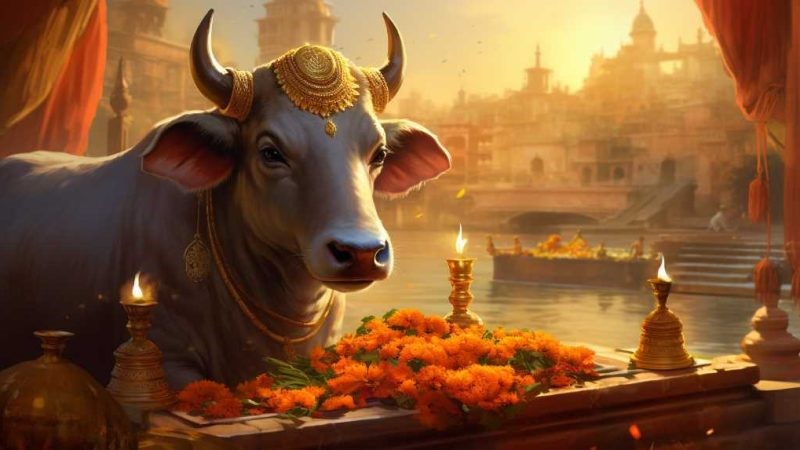The Six Visions The Darshanas of Hindu Philosophy

The Six Darshanas are important schools of thought in Hindu philosophy. They include Nyaya, which focuses on logic; Vaisheshika, which looks at the natural world; Samkhya, which separates reality into pure spirit and matter; Yoga, which teaches how to control the mind; Mimamsa, which explores ritual actions; and Vedanta, which examines the nature of reality. These systems help us understand the world and our role in it.
Each Darshana offers a different way to think about big questions that people have pondered for a long time. They’re not just complex ideas; they have practical value for our lives. For example, by studying Nyaya, we might improve our reasoning skills, and by practicing Yoga, we can better manage stress.
As we learn more about these six visions, we see they aren’t just old theories but ideas that still matter today. They encourage us to look at the world differently and question what we think we know about ourselves and the universe.
In conclusion, the Six Darshanas are more than historical concepts in Hinduism; they are tools for living that continue to inspire and challenge us.
Nyaya: The Logical Perspective
Nyaya is one of six main schools of Hindu philosophy known for its focus on logic and how we know things. It was started by a wise man named Gautama Maharishi. Nyaya’s main book, the Nyaya Sutras, lays out how to have a good debate. It says that four ways of understanding—seeing, reasoning, comparing, and hearing from others—are key to finding out what’s true. Nyaya thinkers like to break down arguments step by step to make sure they make sense. This way of thinking helps us figure out what’s real and has influenced a lot of Indian philosophy.
Let’s make it simpler. Imagine you’re trying to figure out if it’s going to rain today. According to Nyaya, you wouldn’t just guess. You’d look at the sky (perception), think about weather patterns (inference), compare it to a day when it did rain (comparison), and maybe even check a weather report (testimony). By using these steps, you’re using Nyaya’s methods to get to the truth.
Nyaya’s detailed approach is like a blueprint for building solid arguments. It shows us that careful thinking and clear reasons are better than just saying something is true without backing it up. Nyaya isn’t just about debates; it’s about understanding life and the world around us. It’s like having a good map when you’re lost—it gives you directions and helps you find your way.
Vaisheshika: Atomic Realism Unveiled
Vaisheshika is a traditional Hindu philosophy that teaches about the basic components of the universe. It was introduced by Kanada, a wise ancient scholar. According to Vaisheshika, everything in the world is made up of tiny, unbreakable particles called atoms. These atoms are not just the pieces that form all matter, but they also create the characteristics and behaviors of things.
To explain how things exist, Vaisheshika divides everything into three categories: substances, qualities, and motions. Atoms are the most important part of substances. This way of seeing the world shows us that the universe is orderly and makes sense, and we can figure out how it works by observing it.
It’s important to understand this concept because it was an early attempt to explain the natural world using observation and logic, much like modern science tries to do. It shows us that even ancient thinkers were trying to make sense of the world around them in a structured way.
When we talk about Vaisheshika, we should remember that this philosophy gives us a blueprint for how even the smallest parts of the universe are connected to the bigger picture. It’s a bit like looking at a complex machine and realizing that it’s all held together by tiny screws and bolts. This helps us appreciate the beauty and intricacy of the world we live in.
Yoga: Pathway to Transformation
Yoga: Pathway to Personal Change
Yoga offers us a practical way to change ourselves. It uses discipline and self-awareness to help us grow. In Yoga, which is a part of Hindu teachings, there’s an eight-step plan called Ashtanga Yoga. This plan starts with how we behave and ends with us having deep spiritual experiences.
Yoga is not just about moving our bodies; it’s about calming our minds. By doing things like meditation, controlling our breathing, and holding different poses, we can quiet our thoughts. This can lead to Samadhi, which is a state of full concentration. Yoga aims to bring together our own awareness with the bigger, universal awareness. This shows us how Yoga can really change us, according to Hindu beliefs.
In simple terms, Yoga is more than a workout. It’s a way to connect deeply with ourselves and the larger world. For example, when someone practices the breathing exercises in Yoga, they’re not just taking deep breaths. They’re learning to manage their thoughts and feelings.
A recommendation for beginners could be to start with a few basic postures or a simple meditation practice to get a feel for how Yoga can be calming and transformative. Remember, the goal is not just to stretch your body but to also find inner peace and understanding.
Vedanta: Essence of Self-Discovery
Vedanta is a major branch of Hindu thought that really emphasizes understanding ourselves better. It’s all about figuring out who we really are deep down to achieve spiritual freedom. This philosophy digs deep into ancient Hindu texts like the Upanishads, Brahma Sutras, and the Bhagavad Gita. At the heart of Vedanta, you’ll find two key ideas: Brahman, which is the big, universal truth, and Atman, the soul that each of us has.
One of the main ideas in Vedanta, especially in the Advaita Vedanta group, is that Atman and Brahman are actually the same. When you truly get this, that’s when you’ve reached the highest spiritual understanding. This idea goes against the grain of thinking that everything is separate and pushes us to see beyond what we can just see and touch.
But Vedanta isn’t just about thinking; it’s about living it. It suggests a way of life that’s disciplined and includes practices like meditation to really experience that we’re part of something divine.
To make this a bit clearer, imagine you’re using a map to find treasure. Vedanta is like that map, guiding you to discover the treasure that’s already within you. It’s not just about reading the map; it’s about walking the path the map shows.
In a nutshell, Vedanta teaches us that by exploring our own nature, we can connect with the universe’s deepest truths. It’s a journey that involves changing how we live and think, and it’s a journey that promises a profound sense of freedom and understanding at the end.
Mimamsa: Rituals and Duties
Mimamsa is a key school in Hindu thought that specializes in understanding rituals and duties from the Vedas, which are ancient Hindu texts. This school teaches that performing these rituals correctly is crucial for living a moral life. Doing so can lead to success in this life and ultimate spiritual freedom.
Mimamsa is different from other schools because it doesn’t focus on theories about existence beyond our world. Instead, it closely examines the Vedas to guide action rather than just thinking about deep questions.
Mimamsa thinkers believe that the Vedas have always existed and don’t have a specific author. They think these texts are automatically trustworthy, not needing approval from a god. They argue that by carefully following what the Vedas say, we can keep the universe running smoothly. This also helps people know their roles in society and religion, following traditional Vedic practices.
In simpler terms, Mimamsa is about doing things by the book – if the book is the Vedas – to live right and keep everything in balance. For example, just as a recipe guides you to cook a meal step by step, Mimamsa tells you how to perform rituals and live your life so that everything works out the best way possible. It’s like a handbook for life that’s been around for ages, and its followers think it’s still the best guide to follow.
Conclusion
The six darshanas are important views in Hindu philosophy. They cover different topics like how we think, the nature of the universe, our minds, what is right and wrong, and how to reach a spiritual goal.
Each one gives us a unique way to understand life and how to find truth and freedom. For example, the Yoga darshana focuses on physical and mental exercises to help us calm our minds and find inner peace.
By using clear and simple ideas, these philosophies help us look deeply into life and find ways to improve ourselves. They tell us that asking questions and practicing carefully can lead us to real knowledge and freedom.






